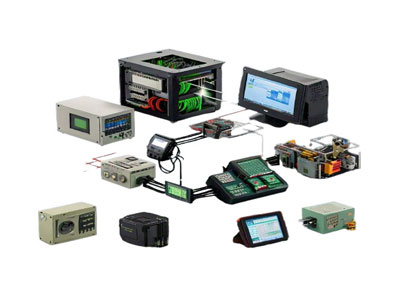Key Takeaway
SCADA (Supervisory Control and Data Acquisition) is used in industries that require real-time monitoring and control of processes. It is commonly found in sectors like manufacturing, energy, water management, and transportation. For example, in power plants, SCADA monitors electricity generation and distribution. In water systems, it manages water treatment and pipeline operations.
SCADA is also used in oil and gas for pipeline monitoring and in factories for overseeing production lines. It provides a centralized view of complex operations, helping operators detect issues, optimize performance, and ensure safety. Its ability to manage processes remotely makes it valuable for industries spread across large areas. In short, SCADA is essential for improving efficiency and reliability in industries that depend on automated systems.
SCADA in Utility and Power Management Systems
One of the most prominent applications of SCADA is in utility and power management systems. SCADA plays a crucial role in monitoring and controlling power generation, transmission, and distribution networks.
In power plants, SCADA tracks metrics such as voltage, current, and frequency, ensuring stable energy production. It also monitors substations and transmission lines, identifying faults and enabling quick rerouting of power to minimize outages. For instance, in a blackout scenario, SCADA systems help operators isolate the faulted section and restore power efficiently.
Utilities also use SCADA to manage energy consumption. Demand-side management features allow operators to optimize electricity distribution during peak times, reducing stress on the grid and preventing overloads.
By offering centralized control and real-time data insights, SCADA ensures the reliability and efficiency of power and utility systems.

SCADA’s Application in Oil and Gas Industries
The oil and gas sector heavily relies on SCADA for managing its vast and complex operations. From extraction to refining and distribution, SCADA systems ensure safety and efficiency at every stage.
In upstream operations, SCADA monitors wellhead pressures, flow rates, and equipment health, providing operators with critical data to optimize extraction processes. Midstream applications include monitoring pipeline pressures, detecting leaks, and ensuring the safe transportation of oil and gas over long distances.
For example, if a pressure drop indicates a potential pipeline leak, the SCADA system immediately alerts operators, allowing them to take corrective action and prevent environmental damage.
In downstream operations, such as refineries, SCADA optimizes production by controlling processes like distillation, cracking, and blending. It ensures that production meets quality standards while minimizing waste and energy consumption.
SCADA’s ability to integrate with other systems makes it indispensable in managing the intricate processes of the oil and gas industry.
You May Like to Read
Role of SCADA in Water and Wastewater Treatment
Water and wastewater treatment facilities depend on SCADA to ensure compliance with quality standards and efficient resource management.
In water treatment plants, SCADA monitors parameters like turbidity, pH levels, and chlorine concentration, ensuring treated water meets safety regulations. It also controls pumps, valves, and chemical dosing systems, maintaining consistent flow rates and treatment levels.
Wastewater facilities use SCADA to monitor and manage processes such as aeration, sedimentation, and sludge removal. For instance, SCADA can optimize aeration systems to reduce energy consumption while maintaining adequate oxygen levels for microbial activity.
By providing real-time data and control capabilities, SCADA helps water utilities minimize costs, conserve resources, and ensure the safety of water supplies.
SCADA’s Use in Manufacturing and Process Industries
In manufacturing and process industries, SCADA is essential for improving productivity, maintaining quality, and reducing downtime.
SCADA integrates with PLCs and sensors to monitor machinery, conveyor belts, and robotic systems in real time. For example, in an automotive assembly plant, SCADA tracks the progress of vehicles along the production line, ensuring each stage is completed on time and to specification.
In process industries like food and beverage or pharmaceuticals, SCADA monitors parameters such as temperature, pressure, and mixing ratios. It ensures compliance with safety and quality standards while reducing waste.
SCADA also enables predictive maintenance by analyzing equipment performance data. If a machine shows signs of wear or inefficiency, SCADA alerts operators to schedule maintenance before a breakdown occurs, minimizing unplanned downtime.
With its ability to oversee complex operations, SCADA is a vital tool for maintaining efficiency and quality in manufacturing environments.
SCADA in Transportation and Infrastructure Management
SCADA systems are widely used in transportation and infrastructure management, ensuring safety and efficiency across various applications.
In railways, SCADA controls signaling systems, monitors track conditions, and ensures trains run on schedule. For instance, it can detect a malfunction in a railway switch and alert operators to prevent delays or accidents.
In road transportation, SCADA manages traffic signals, toll booths, and highway lighting systems. It can optimize traffic flow by adjusting signal timings based on real-time traffic conditions.
Infrastructure applications include managing HVAC systems, lighting, and security in airports, ports, and commercial buildings. SCADA’s ability to integrate with diverse systems makes it a versatile solution for complex infrastructure projects.
By providing centralized control and automation, SCADA enhances safety, reliability, and operational efficiency in transportation and infrastructure management.
Conclusion
SCADA systems are used across a wide range of industries, from utilities and energy to manufacturing and transportation. Their ability to monitor, control, and optimize processes ensures efficient and reliable operations in critical applications.
By integrating real-time data acquisition, remote control, and advanced analytics, SCADA helps industries improve productivity, reduce costs, and enhance safety. Whether managing power grids, refining oil, treating water, or optimizing transportation networks, SCADA remains a cornerstone of modern industrial automation. For engineers and operators, understanding its diverse applications unlocks the potential to drive innovation and efficiency in their respective fields.
